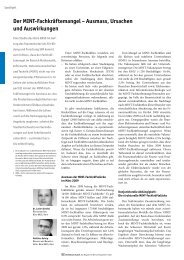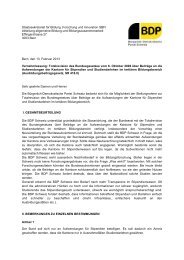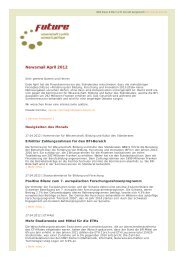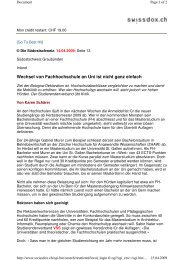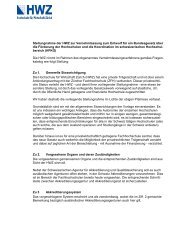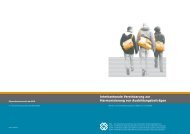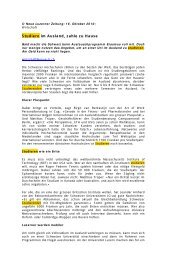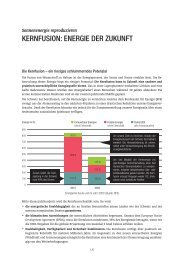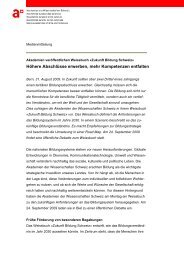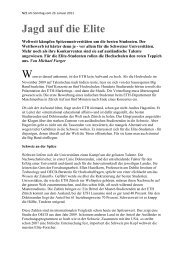Higher aspirations: an agenda for reforming European universities
Higher aspirations: an agenda for reforming European universities
Higher aspirations: an agenda for reforming European universities
Create successful ePaper yourself
Turn your PDF publications into a flip-book with our unique Google optimized e-Paper software.
EUROPEAN UNIVERSITIES A EUROPEAN HIGHER EDUCATION SPACE<br />
<strong>an</strong>d imitation among institutions. As we have argued in the previous section, the<br />
extent of this phenomenon is likely to be limited at the undergraduate level, but that<br />
this is not in itself alarming. Yet it would be a very signific<strong>an</strong>t failure if it did not materialise<br />
at the graduate level.<br />
The central role of the second level of higher education, the Master level, is a major<br />
trait of the Bologna process. It has some parallels in the US system of professional<br />
schools (law, medicine, business, etc.), but no exact <strong>an</strong>alogue that is as comprehensive.<br />
It thus provides <strong>an</strong> opportunity to develop something characteristically<br />
Europe<strong>an</strong>. It seems clear that the typology of Masters will sp<strong>an</strong> a wide r<strong>an</strong>ge with, at<br />
one end of the spectrum, strictly professional, practice-oriented degrees, perhaps<br />
offered in association with enterprises <strong>an</strong>d, at the other end, research-oriented<br />
degrees which open the way to a PhD. But the field is evolving <strong>an</strong>d m<strong>an</strong>y intermediate<br />
cases will emerge. It is still too early <strong>for</strong> a final model to have crystallised. This is<br />
a domain where a bottom-up approach is the appropriate strategy: experimentation<br />
<strong>an</strong>d institutional risk-taking are fully justified <strong>an</strong>d should be encouraged.<br />
The student access policies discussed <strong>for</strong> the Bachelor level should now be qualified<br />
in two ways <strong>for</strong> the Master level.<br />
First, Master degrees typically represent a commitment of student time of one or two<br />
academic years 12 . It would not make much sense to devote a subst<strong>an</strong>tial fraction of<br />
this time to selection. There<strong>for</strong>e the matching system which leaves the selection of<br />
admitted students to the institutions themselves will now come into its own. Since<br />
we are contemplating the emergence of fierce competition, this should not have a<br />
negative impact on efficiency, rather the contrary. It should be added, however, that<br />
the matching task would be much aided by the development of Europe-wide st<strong>an</strong>dardised<br />
voluntary tests.<br />
Second, while the principle of the right of access should be strictly maintained <strong>an</strong>d<br />
actively promoted, the argument in favour of fees embodying a subst<strong>an</strong>tial subsidy<br />
is now somewhat weaker. A policy of scholarships <strong>an</strong>d of income-contingent lo<strong>an</strong>s<br />
may suffice <strong>for</strong> guar<strong>an</strong>teeing the equity objectives. The specific policy may, of<br />
course, depend on the nature of the Master. A research Master leading to a Doctoral<br />
degree should not be treated in the same way as a professional Master comm<strong>an</strong>ding<br />
a more immediate market return. For example, the University of Cali<strong>for</strong>nia at<br />
12. Both lengths are currently present, even within the same country, <strong>an</strong>d the expectation is that they will continue<br />
to coexist.<br />
18



